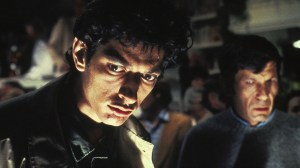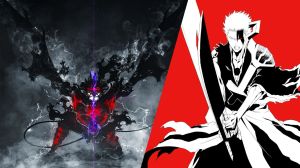One’s feelings about the prequel trilogy have become a litmus test for what kind of a Star Wars fan you are. Some remain originalists, choosing to ignore that anything produced after Star Wars: Return of the Jedi exists, others are maximalists, insisting that no one has ever made a bad Star Wars movie, and then there are those who fall in between. There’s little to be gained in microwaving the luke-warm take that is “The Prequels Are Good, Actually,” which has been written by every website on the internet, probably going back as far as when Al Gore flipped the on-switch. But the prequels are, to a certain degree, misunderstood.
Videos by ComicBook.com
Of the most-often derided elements of Star Wars: The Phantom Menace, one is the trade negotiations. The very existence of trade negotiations in the Star Wars universe seems to incense certain fans, as this is, after all, supposed to be an adventure story about plucky Rebels fighting an evil Galactic Empire, not an economics class. To make matters worse, its two Jedi on the job. The mystical, Force-wielding knights of legends in the original trilogy are playing at politics.
The thing that people miss is that this is exactly the point. The Phantom Menace takes place past the apex of the Galactic Republic’s power and, like real-world civilizations of the same kind, it has grown unwieldy and is bogged down in bureaucracy. It’s this political girth that allows Palpatine to scheme in the background, set factions against each other, and then rise to power on the promise of more swift and decisive action.
That two Jedi are dispatched to handle these negotiations is evidence of how generations of service of the Republic have affected the Jedi order. Once a quasi-religious group dedicated to balance in the Force above all else, the Jedi are now inextricably tied to the day-to-day politics of the Republic. This is the cloud that enshrouds the Jedi’s foresight that Yoda mentions later on, is the hubris and failure that Luke will warn Rey about in Star Wars: The Last Jedi, and it’s the blindness that Darth Sidious is able to take advantage of to enact his plans.
George Lucas was trying to depict the fall of a society. It’s a political institution crumbling in slow motion, with its transformation in Star Wars: Revenge of the Sith being what gives way to the Wild-West-meets-Nazi-Germany setting of the original trilogy.
By kicking off The Phantom Menace with Qui-Gon and Obi-Wan mediating trade negotiations, Lucas succinctly illustrated how different the universe is at this time compared to when Obi-Wan later mentors Luke in A New Hope. Instead of there being two Jedi left in all the galaxy, there are enough to spare on a trivial task such as this. It also depicts a different kind of existence from what Luke must have imagined the life of a Jedi Knight to be, less heroic and more middle management.
Part of why these components are so easily overlooked is because it’s one version of a movie having an identity crisis. The political narrative is an awkward fit in the same movie that also wants to be a children’s adventure story with podracing and the slapstick styling of Jar Jar Binks. Star Wars: Attack of the Clones carries the thread in Obi-Wan Kenobi‘s investigation of the Clone Army’s creation and the Jedi being conscripted as generals in the army in the Republic. Revenge of the Sith delivers the final blow, with Palpatine revealing himself for what he is and beginning the process of wiping away the last vestiges of the Republic, which he completes in Star Wars: A New Hope with the dissolution of the Galactic Senate.
That’s the greatest crime of the prequel trilogy, having good ideas and being too distracted to execute most of them with any degree of success. But next time you watch The Phantom Menace, assuming you will, maybe look upon those maligned trade negotiations in a more charitable light.
The Skywalker Saga will conclude with Star Wars: The Rise of Skywalker on December 20th.

Welcome to Star Wars Week! ComicBook.com is celebrating the release of Star Wars: The Rise of Skywalker all week long with an in-depth look at the last four decades spent in the galaxy. Click on the banner to see more of our exclusive coverage and videos celebrating all things Star Wars!








